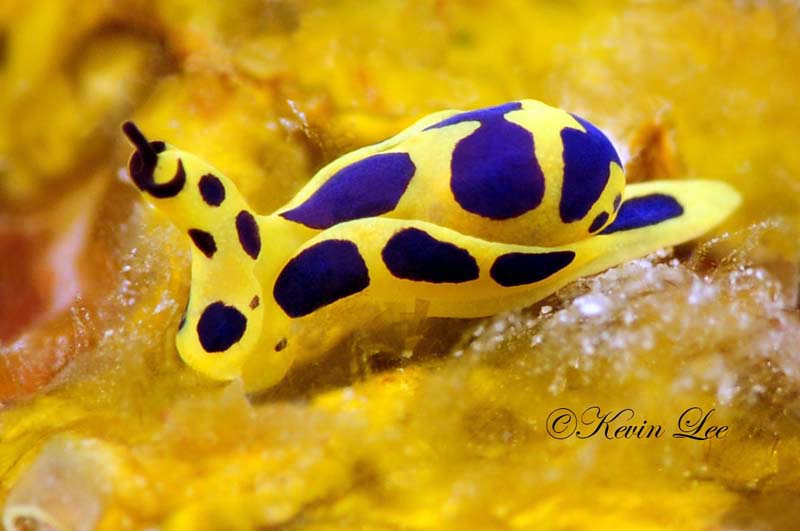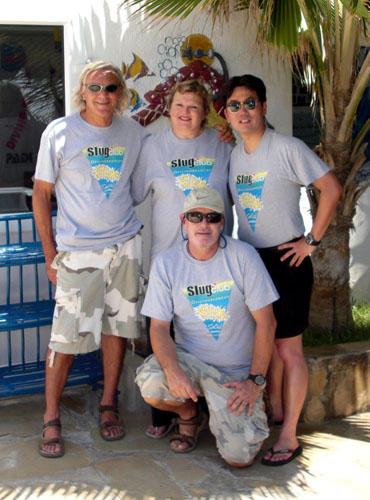 |
Siphopteron michaeli
Photo was taken at Watamu, Kenya, AfricaPhoto courtesy of Kevin Lee
Copyright 2011
Siphopteron michaeli (Gosliner & Williams, 1988)
Simply one of the most striking cephalaspideans there is. The species was named to recognize the senior author's brother, Michael Gosliner .
Kevin's shot here may be the first mainland sighting of this species, which to date, was known only from its type locality, Reunion Island , in the Indian Ocean.
The animal is uniformly yellow or yellow-orange, with large elongate dark brown spots on the head shield, visceral hump, and outer sides of the parapodia. There is one large elongate spot in the dorsal midline of the posterior foot. Siphopteron is separated from other gastropterid genera by having a crest or sometimes a central rod, protruding from the end of the siphon at the posterior end of the head-shield. Specimens are small, reaching only 5 mm in length.
Nothing is known about its biology or prey species.
Rudman has speculated that it likely feeds on flatworms (Link courtesy of the Sea Slug Forum).
Gig Harbor, Washington
March 2011
Lorenzo de Ponti, Christiane Waldrich, Kevin Lee and Angelo de Faveri Blue Fin Diving, Watamu, Kenya, Africa

Kevin has just published an excellent article online based on his trip to Africa! See Scott Gietler's Underwater Photography Guide ! The following are excerpts from that article that will definitely wet your appetite to read the whole story as told by Kevin! "...Years ago, I trekked to the top of Mt. Kenya, the second highest summit on the African continent, at 17,000 feet and enjoyed the adventure more than climbing, days later, to the higher summit of Kilimanjaro. Little did I imagine, then, that Africa would beckon me back and I would return to experience the wonders of the ocean, underwater photography & scuba diving off Kenya’s scenic eastern coast. ..." "...Beautiful Reefs and Rare Nudi's Corals, soft and hard, are plentiful and varied, though they are relatively small and do not grow to the massive sizes found in other Indo-Pacific regions like Indonesia and the Philippines. Yet, the waters teem with many fish species, some of which were new to me. Scorpion and Stonefish, the size of basketballs, came by the dozen. They are so well camouflaged, I nearly set my hand on a nasty looking one. Afterward, I made sure to maintain a healthy distance, by donning a glove and employing my reef stick. Schools of jacks, barracuda, frogfish, angels, groupers, and ever pesky wrasses vied for our attention. Of course, the main object of our photographic desires was opisthobranchs and we found plenty of them. Lorenzo and Angelo are major sluggers themselves, as is Christiane Waldrich (co-owner of Villa Markisa Dive Resort in Bali) who joined, all the way from Indonesia, to participate in our treasure hunt. Our dive guide, James, also has a sharp eye for slugs and together our group found some rare nudies that are some of the most strikingly stupendous, I’ve seen anywhere..."
Send Kevin email at diverkevin@gmail.com |

|
